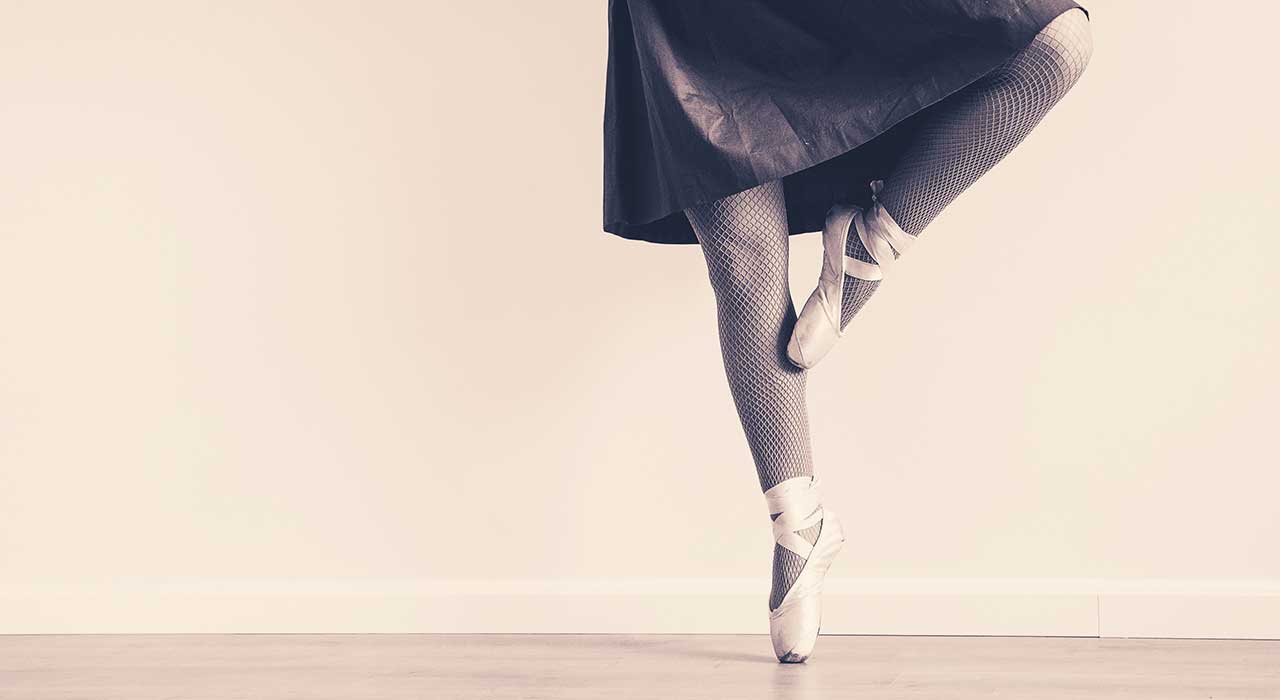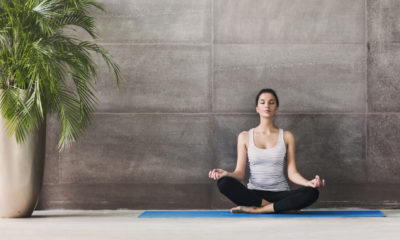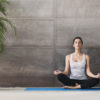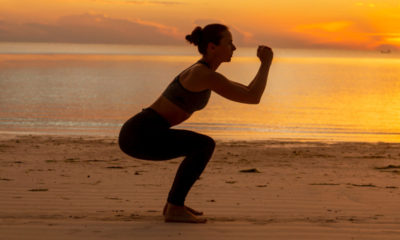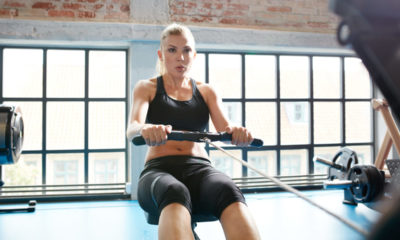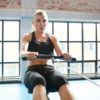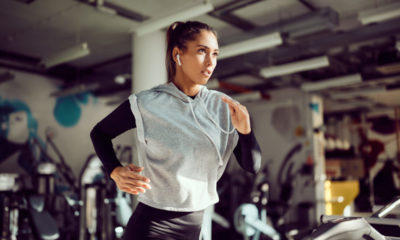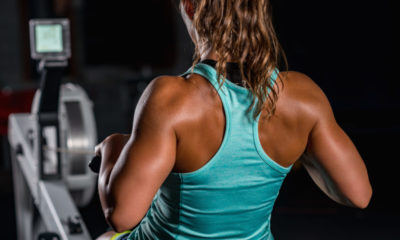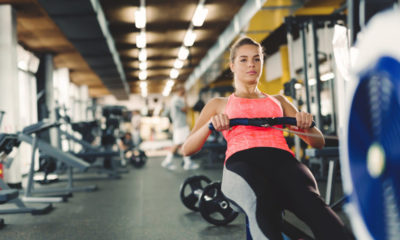Fitness
Why Dancing And Fitness Will Lead To A Better Mind And Better Body
Get those hips shaking and you’ll gain more than a shapely derrière – dancing boosts brain power, reduces stress and increases self-esteem.
Whichever way you choose to get those feet moving, the changes you’ll see in yourself will be so much more than physical. Yes, you’ll lose weight and build strength and coordination, but there are other ways that dancing will enhance your life.
You’ll appreciate your body more
Throwing your body around rhythmically to music might not seem like an obvious choice if you’re already self-conscious about your physique, so you might be surprised to learn that some styles of dancing provide a special benefit: they give you enhanced body image and make you view your body in a less objectified way.
A study published in Springer journal Sex Roles found that women who regularly belly-danced viewed their bodies in a more positive light and also scored lower on body dissatisfaction. The belly-dancers were also less likely to objectify their bodies, that is to see themselves as objects or a collection of body parts to be used, rather than a whole being.
You’ll feel motivated to stick to it
While changing your attitude to your body is paramount, let’s face it, a lot of us also want to change our bodies – to a healthier, fitter version of what they are.
One of the main stumbling blocks when working out to lose weight is staying motivated. After a while, the same schedule of running, cycling, combined with weights, becomes incredibly dull. But the beauty of dancing is that it’s also creative; there are dance moves to follow but it’s not the same as when you’re following a workout move such as a squat or a lunge, for example.
With dancing you do similar moves but you can set your inner Zendaya, Beyoncé, Madonna, Anna Pavlova or even Mata Hari free within that framework! A good dance teacher will help by constantly switching things up or down a gear to keep you guessing or learning.
You’ll work neglected muscles
Hand in hand with all the emotional changes dancing provides is the way in which it alters your body. But this isn’t just about losing weight, there’s much more going on.
For example, with Jamaican dancehall, all kinds of traditional workout moves are combined – squats, lunges, kicks – with additional moves like thrusting, hip swiveling and a lot of jiggling your butt. You’ll be moving in ways you wouldn’t dream of doing during a normal workout!
What’s better? You’ll stick to it for longer because music’s involved. Similarly, salsa and belly-dancing also get you to move your body in more varied ways, especially in the hip and pelvic area.
So what does this mean for you, specifically? Great things – aside from sculpting a shapely butt, these kind of dance moves help work muscles that are often neglected within the pelvic region. Strengthening your hip rotator muscles, for example, which are connected to your pelvic floor muscles, can rebuild strength after childbirth or even boost strength for during sex.
You’ll become more coordinated
If you’re worried about getting all the moves wrong, great! People like you are even more likely to benefit from doing a dance class. The fact is that while some people may be born with a pair of nimble feet, coordination is largely learned – the more you do it, the more coordinated you become. So dance is an excellent way of improving your ability to follow any kind of pattern, be it in a martial arts class, spinning or aqua aerobics class.
“Some styles of dancing are incredibly complicated to follow at first and you might feel as though you’ve got two left feet,” says salsa teacher Super Mario of salsaclass.tv, who teaches in various locations in London. “But over time, with training, your feet, hands, hips and so on become easier to coordinate, and you’ll even find new dance moves easier to grasp.”
The great thing is that by learning dance steps you’ll become even more coordinated when doing other things, too. Research published in the Journal of Neurophysiology looking at ballet dancers found they have more control over their muscles than those without dance training, not just when doing ballet but when doing everyday tasks.
Dance will also make the weights room safer and more productive place
“The importance of alignment and posture was instilled in me at a very young age from dancing,” says Ashley Yeater, CEO of Define (ashleyyeater.com). “And to be able to teach Define clients those tips and tricks while lifting weights or doing Pilates based work while holding onto a ballet barre is beyond thrilling. I see my clients grow each week with the moves I throw at them because their confidence is growing and the trust in their own bodies is starting to shine.”
Good posture and alignment – something you learn while dancing – is so important when lifting weights. It can mean the difference between reaching your goals easily or suffering an injury.
You’ll give your brain a workout, too
Busting out your best moves does improve brain function. So much so that it is being used for patients diagnosed with Parkinson’s disease, a neurological movement disorder.
When you dance, various parts of your brain get involved. For example, let’s say you’re doing tap dance. As you move, your motor cortex works to plan your next move with your feet, controlling and also executing that movement; your cerebellum is needed to make sure your toes point or your hands are held just so, as well as other fine motor movements. The somatosensory cortex works to make sure your hands swish this way and that and, finally, the basal ganglia smooths out all your moves.
This is perhaps why, when researchers from the Albert Einstein College of Medicine, US, looked at various activities and their effects on older people, they found that people who danced, as well as or instead of cycled, played golf, tennis or went swimming, were less likely to suffer with dementia later in life.
Other research from North Dakota’s Minot State University revealed that Zumba, the hugely popular dance fitness style, improved cognitive skills in participants, as well as visual recognition and decision making.
Further research on various dance styles shows that learning new steps helps develop new neural connections, which is also great for improving memory.
There’s no room for stress
When work or family pressure is getting too much it can seem like having emotions is more of a burden than a benefit, which is why dancing is particularly useful if you’re someone who tends to get worked up over things.
When you dance, your brain is engaged into coordinating your various body parts with the music, which doesn’t leave any room for worrying about whether you’re going to get that report in on time, how you’re going to pay off your bank loans or even whether or not you’re living the life you want.
Big worries or little, dancing doesn’t leave room for them in your brain. “Dancing has and always will be an amazing escape for me,” says Yeater. “Allowing myself to let go and just create in a dance studio is priceless.”
You’ll feel revitalized
Music can lift your mood in an instant; that’s another bonus of dancing. The rhythm helps give you a guide to move your body but music itself also activates your brain’s reward centers, releasing feel-good hormones, making the entire experience seem like fun. This results in you doing it more often and for longer.
What’s more, research from Brunel University London found that people who exercise to music boost their endurance by 15%, and listening to music helps reduce stress and releases serotonin, the chemical that makes you feel good and relaxed. Combining those elements with the benefits of moving, and it’s easy to see why dancing is such an excellent all-rounder for health.
Find fitness articles and more in every issue of TRAIN for HER magazine


